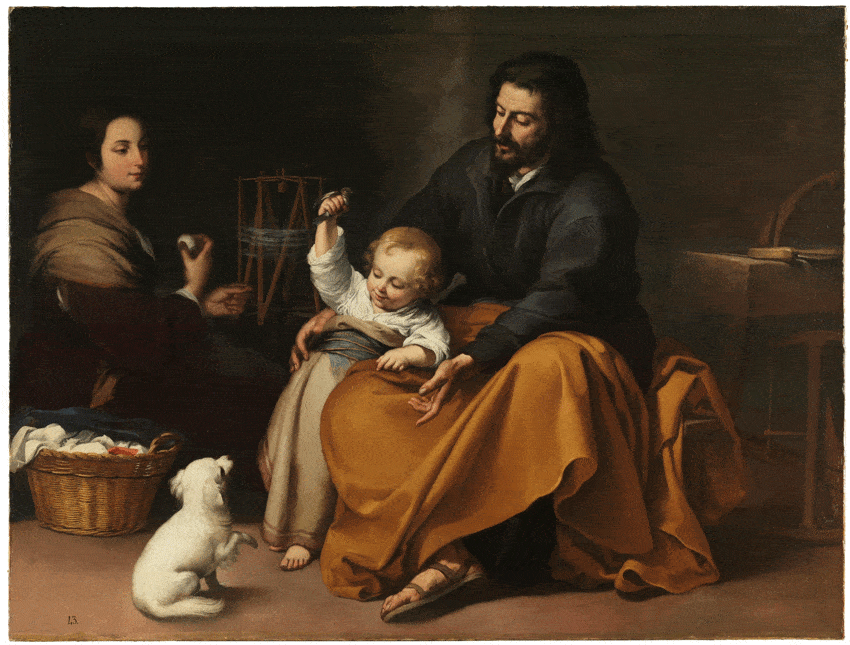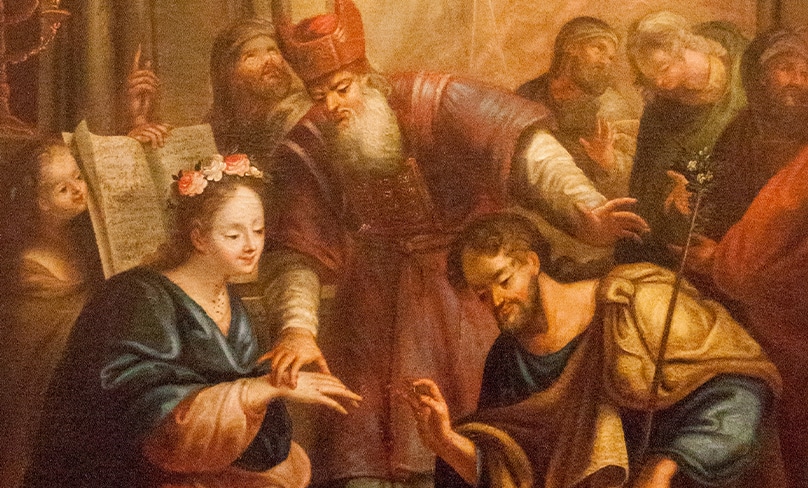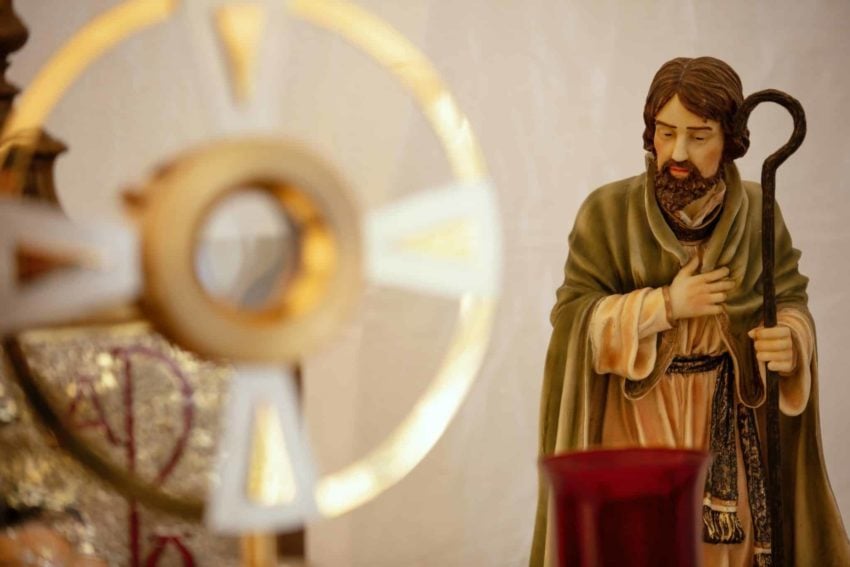
By Francis Etheredge
It could be said that just as womanhood has been overshadowed by the problems of our time so Mary, the Mother of the Lord, has come to prominence in recent times, notably being included in the document on the Church as the fullest, personal expression of the mysteries of salvation (cf. Lumen Gentium, 65). Similarly, then, just as men are embroiled in the crises of the day, so St. Joseph has come to prominence, as worker and spouse of Mary, bringing the whole Holy Family into the prayers of the Mass and, by implication, calling us to invoke their help with the mission of the family today. In more recent times, St. John Paul II wrote a little booklet on St. Joseph, spouse of Mary, Guardian of the Redeemer, and Patron of the Church; and, therefore, ‘he likewise watches over and protects Christ’s Mystical Body, that is, the Church, of which the Virgin Mary is the exemplar and model’ (Redemptoris Custos, 1). Pope Francis declared last year, 2021, to be dedicated to St. Joseph; and the Pope has said:
‘Saint Joseph reminds us that those who appear hidden or in the shadows can play an incomparable role in the history of salvation’ (Patris Corde, Introduction).
St. Joseph and Life (cf. Jn 14: 6). We can often think that being open to life is to be willing to have children; and, indeed, this is true – but St. Joseph expresses the fullness of being open to life to be that of being open to God. Just as Mary accepted the will of God and accepted the Son of God taking flesh in her womb (cf. Lk, 1: 36-38), so Joseph opened his heart to the truth that his wife’s child was ‘of the Holy Spirit’ (Mt 1: 20). At the same time, the life of Mary and Joseph clearly encompassed other children who were so closely associated with their own family that they were called ‘brethren’, ‘brothers and sisters’ (Mt 12: 46-50 etc.)

The Blessed Trinity, Eve and Mary, Adam and Joseph. In this mystery of the Incarnation of the Son of God, of the Second Person of the Blessed Trinity taking flesh in Mary, we can glimpse the life of the Blessed Trinity in which each Person is open to the life of the Other. So when the Incarnation of the Son of God takes place in the presence of the Blessed Trinity, this communicates the life-giving love of God showing forth in a long line of women who were barren but then conceived because of the action of God, culminating in Mary, the Mother of the Lord, conceiving in a unique way, in contrast to the women who went before her, because she conceived without ‘knowledge of man’ (Lk 1: 34). In other words, Mary recapitulates Eve, who although she had known Adam, emphasized the action of God at conception and said, “I have gotten a man with the help of the Lord” (Gn 4: 1). Just as the Incarnation transcends the mystery of procreation, so the faith of Mary transcends that of Eve as she says that ‘nothing is impossible to God’ (Lk 1: 37). Similarly, Joseph, going beyond Adam’s passive participation in the Snake’s deception of Eve, embraces the reality of the will of God as he comes to know it and accepts the vocation to be the husband of Mary and the foster father of Jesus.
Vocation, Pilgrimage and Prayer. In the history of salvation there is no more significant family than that of the Holy Family of Joseph, Mary and Jesus; indeed, they are the very conclusion of the Old Testament and the foundational beginning of the New. Joseph is a virginal spouse and father, Mary a virginal wife and mother and Jesus a virginal son; together, they express the manifold works of God in which each person is completely fulfilled, while at the same time expressing the vocational transition from the Old Law to the sacraments of the Christian Church. Thus there is the marriage of Joseph and Mary and, at the same time, each of them expresses the religious vocation of brother and sister, then there is the priestly celibacy of their son Jesus, entailing as it does the religious vocation to celibacy. In other words, whatever our age, time of life and calling, we can find it in the lived reality of the Holy Family.

What is clear, however, from the different intimations about their life is that vocation, prayer and pilgrimage, was the structure, as it were, of their family life. When Jesus goes on pilgrimage with his family, it clearly becomes a regular experience (cf. Lk 2: 39, 41 etc) based on the foundation of His parent’s faithfulness to the law (cf. Lk 2: 22 etc). As an adult, Jesus is familiar with the Scriptures, which He can read (cf. Lk 4: 16) as well as being able to draw on innumerable Old Testament sources (cf. Lk 4: 25-27) as well as drawing on a talent for observation, argument and parables (cf. Lk 7: 28-35 etc.).
Francis Etheredge is the author of The Family on Pilgrimage: God Leads Through Dead Ends, a trilogy on serial relationships, family life and prayer (13 books on Amazon).
